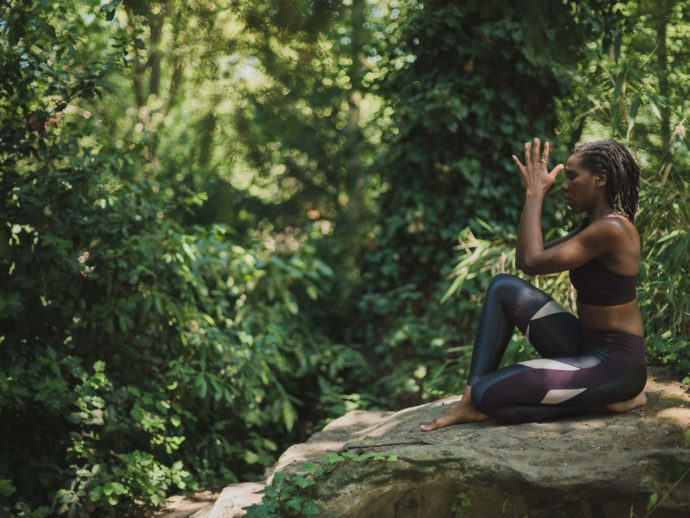Find balance with this meditative practice
Have you heard of Yin yoga? This unique traditional yoga practice stands out with its transformative approach. Try it out to help you relax, de-stress and find your center.
What is Yin yoga?
In Yin yoga, postures are passively held from three to eight minutes. This deep holding brings more lengthening, elasticity and therapeutic release to the connective tissues, ligaments, bones and joints than more active yoga styles do. It also provides a meditative opportunity to move past our frantic thoughts and pace, and surrender body and mind.
Yin and yang
Yin yoga draws upon the classic Chinese philosophical properties of yin and yang. For example, yin represents dark, cold, feminine, moon and water. In contrast, yang represents light, hot, masculine, sun and fire. When yin and yang are equal, the body is in a state of wholeness and health.
Yins and outs
Yin’s passive poses are done on the floor. The stillness and relaxation of Yin postures help the body become more flexible and enhance circulation. While active yoga styles call upon strength and stamina, Yin targets areas of the body seldom tended to.
“Connective tissue does not respond to quick movements or short holds,” explains senior yoga teacher Angie Ackerman. “Like a piece of toffee that you want to share, it requires patience and a slow steady pull.”
Yinsight
With fewer postures held for longer, Yin is intensely meditative. Yin yogis work toward “supple bodies, flexible minds and deepened tolerance and patience,” shares yoga teacher Angela Jervis-Read. Yin invites us to be present through discomfort, accept aches as they come and go and resist constant shifting. We are also urged to gently recognize but not indulge the presence of distraction, self-doubt and mental list making. It may look as if you aren’t doing much, but intense activity is going on inside the body.
Practice tips
Yin is best suited to, and most benefits, those with an already established yang practice. If you are immersed in an active, muscular style of yoga, known as yang, Yin can be a healthy addition to your practice. Ackerman says that since “Yin does not teach you how to breathe, stretch or strengthen the muscles, Yin is a complement, not a replacement [for yang practice].” It is not recommended for beginner yoga students.
It’s also a good idea for pregnant women, seniors with brittle bones and those with a history of physical or emotional trauma to check with a health care practitioner and a skilled teacher before beginning a Yin practice. As with any form of yoga or movement, overdoing it is always possible, so it’s crucial to listen to your body carefully, particularly for indications of strain, pain, panic or unease.
Jervis-Read describes how in a Yin class “we are on our edge, exploring our perceived limitations.” Yin takes us to the depths, in body, mind and soul.

